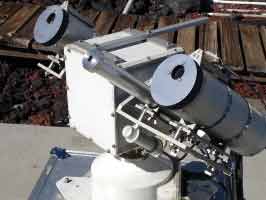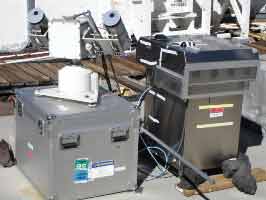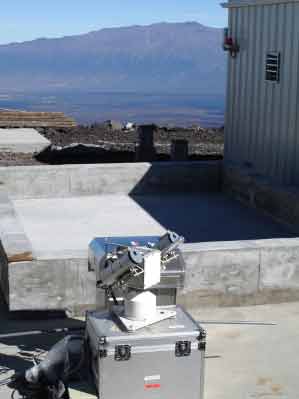More than two years after road access and electrical power to the Mauna Loa Observatory was cut off by lava flows, NOAA staff continue to make critical measurements of the atmosphere and other environmental variables at the remote site.
In 2023, observatory staff installed solar panels at the site and resumed some measurements, including the independent carbon dioxide monitoring programs run by the Global Monitoring Laboratory and Scripps Institution of Oceanography, as well as other atmospheric measurements.
Construction of a temporary road to access the observatory site is anticipated to begin in summer 2025.
Media can contact: Theo Stein (303) 819-7409 (theo.stein@noaa.gov)
Organization(s):
 Meteorological Research
Institute (MRI)
Meteorological Research
Institute (MRI)
What does this program measure?
The solar direct irradiance , sky brightness (relative value), and optical thickness.

How does this program work?
We estimate the amount of aerosol in the atmosphere from the attenuation of the solar direct irradiance and sky brightness.
Why is this research important?
We would like to know the aerosol amount in the atmosphere (aerosols are small particles in the air).

Are there any trends in the data?
We don’t check trends of our data.
How does this program fit into the big picture?
What is it's role in global climate change?
Aerosols in the atmosphere directly and indirectly change the earth's radiation budget. Therefore, they change climate.
Comments and References
We have a network to measure aerosol amount in the area of Japan and China. We must regularly calibrate the instruments to measure the solar radiation. The MLO is one of the best place to get the data for the calibration in the world.
Lead Investigator(s):
Akihiro Uchiyama
+81-29-853-8605
MLO Contact(s):
Dr. John E Barnes
808-933-6965
Web Site(s)
http://www.aeoliandust.com/users/uchiyama/index-e.html
http://www.mri-jma.jp/Dep/cl/cl3.html
Date Started
1994
Related Programs
Photographs:
see inset photos

